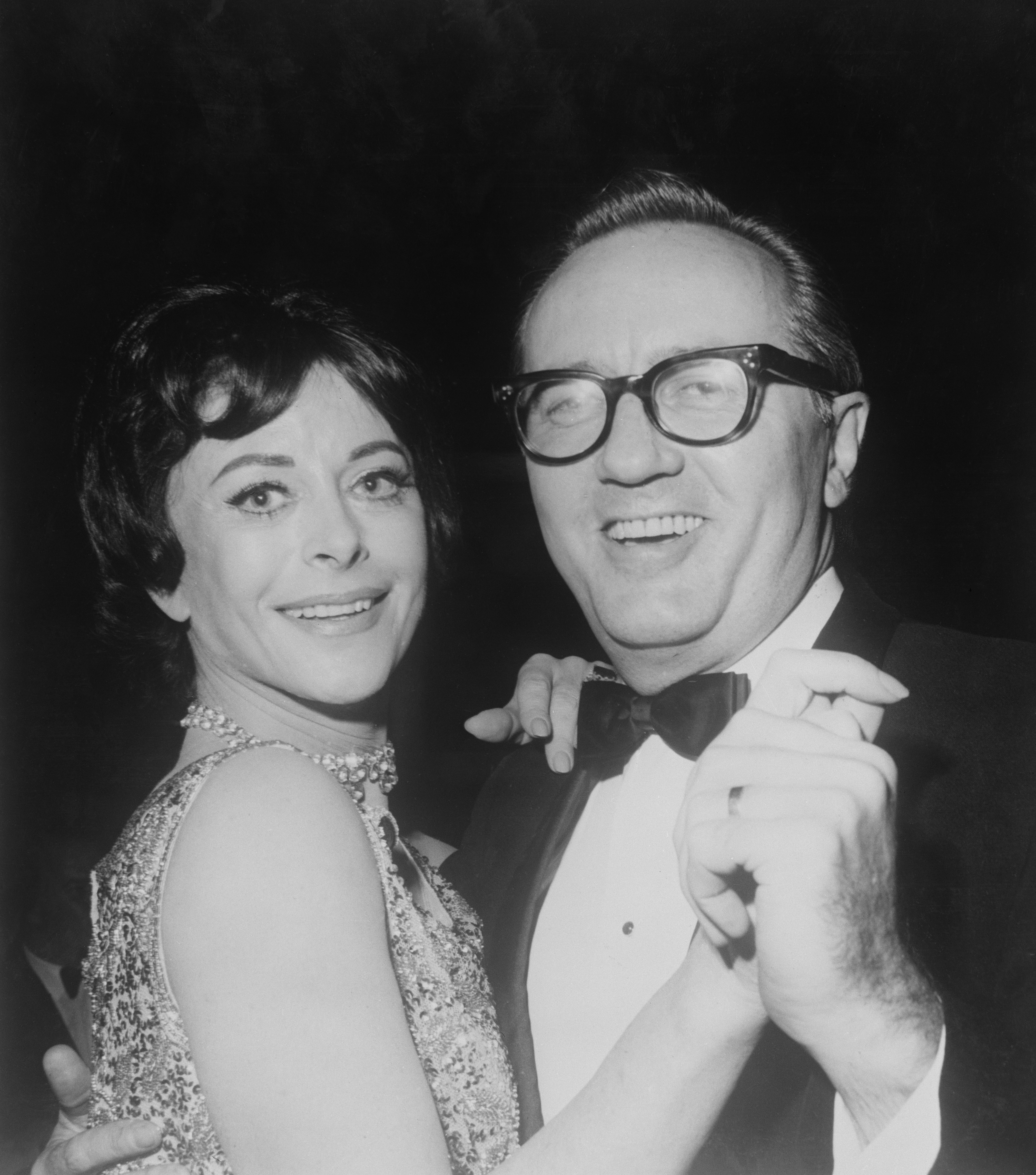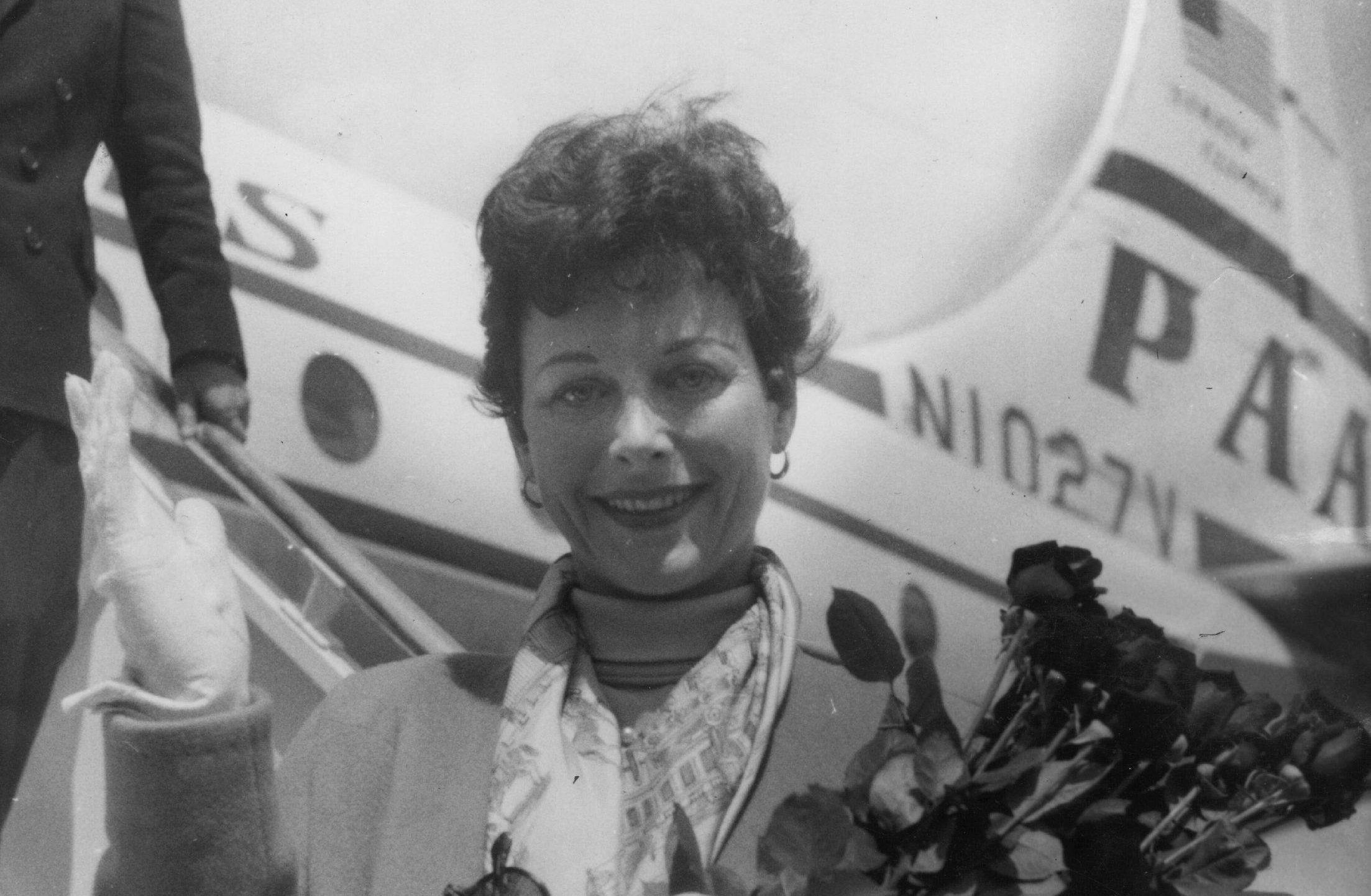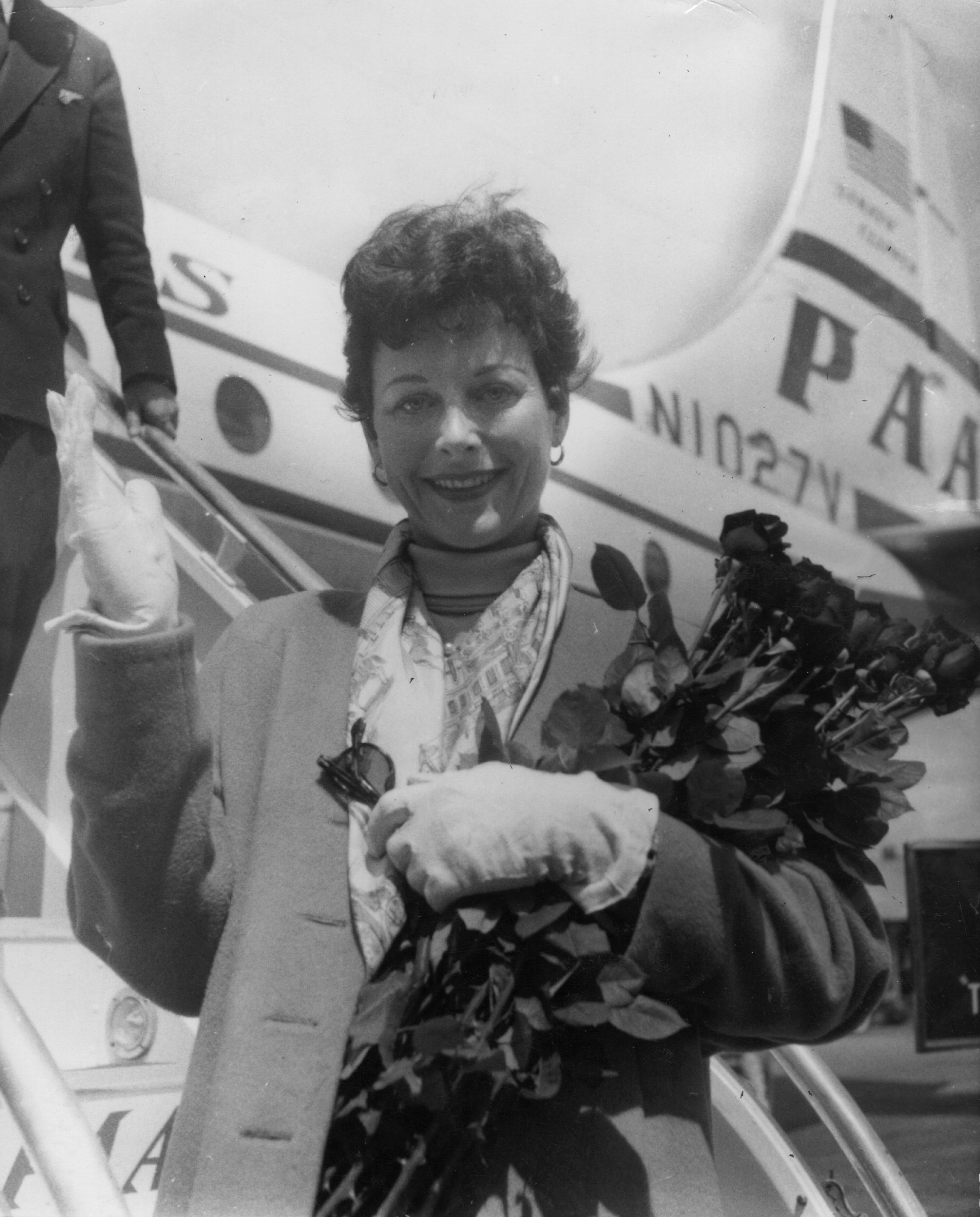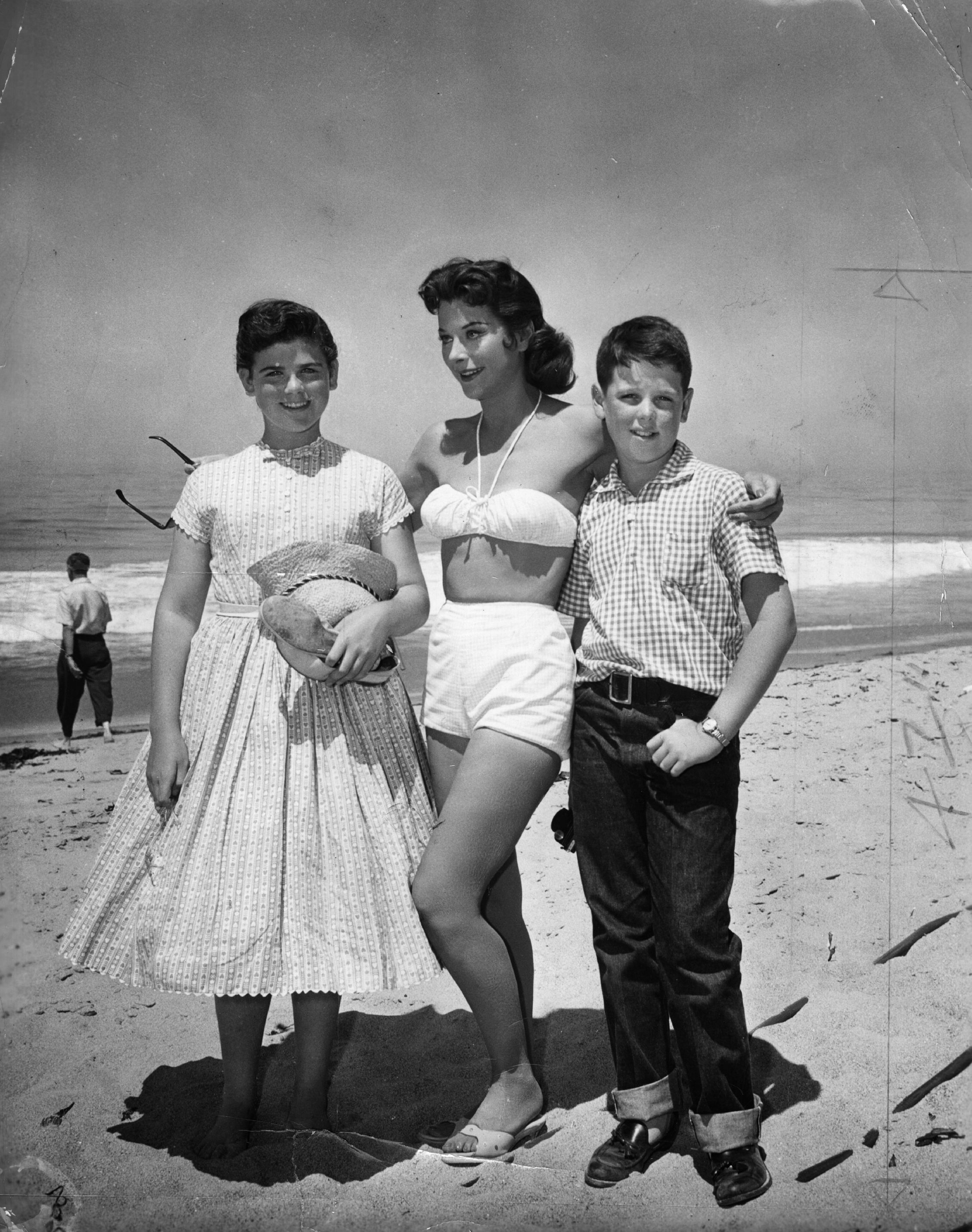
Actress Hedy Lamarr is being celebrated by Google on what would have been her 101st birthday. (Jennifer Hom/Google Doodle)
The Austrian-born actress turned inventor Hedy Lamarr is being celebrated with a Google Doodle on what would have been her 101st birthday.
Lamarr, who died in 2000 at the age of 85, was promoted as “the world’s most beautiful woman” during her career as an actress in the 1930s and 40s. Lamarr later turned her attention to inventing after becoming bored with acting, and tried to help the Allies win World War II both with her inventions and through fundraising efforts.
Google has also created a YouTube video honoring Lamarr.
Here’s what you need to know about Lamarr:
1. She Was Born in Austria & Moved to Hollywood in 1938
Hedy Lamarr was born Hedwig Eva Maria Kiesler on November 9, 1914, in Vienna, Austria, according to HedyLamarr.com.
Lamarr’s career as an actress began when she was 17 in a German film called Geld Auf Der Strase. After starring in German and Czechoslovakian films for the next several years, she drew the attention of Hollywood producers. She was known for her nude swimming scene and lovemaking sequence in the 1933 Czech film, Ecstasy, which was considered torrid for its time, according to the New York Times.
“It became her lot to be cast as exotic, sultry women — and she did her best; but conscientiousness is not quite what we expect in our femme fatales. Too often, she had a worried look,” film historian David Thomson told the Times, after Lamarr’s death.
In 1938 she moved to Hollywood, California, and signed a contract with MGM. Her first American film was Algiers in 1938. She later starred alongside actors like Spencer Tracy, Clark Gable and Jimmy Stewart, and her films included Tortilla Flat in 1942, White Cargo in 1942 and Samson and Delilah in 1949.
“The boys abroad, during the Second World War, voted her the most desirable, beautiful actress or pinup that they could possibly see,” writer Richard Rhodes told CBS News in 2012, soon after he wrote a book about her life. “So she had a great deal of fame and fortune, but not that inner satisfaction that she wanted in life.”
Lamarr once said, “Any girl can be glamorous. All you have to do is stand still and look stupid.”
Read more about Hedy Lamarr in Spanish at AhoraMismo.com:
2. She Turned to Inventing After Becoming Bored With Her Film Career
Lamarr was not satisfied with the roles she was being offered in Hollywood and became bored with acting, Richard Rhodes, who wrote a book, Hedy’s Folly, about her life, told NPR in 2011. So she turned to inventing.
“Hedy didn’t drink. She didn’t like to party,” Rhodes said. “Her idea of a good evening was a quiet dinner party with some intelligent friends where they could discuss ideas — which sounds so un-Hollywood, but Hedy had to find something else to do to occupy her time.”
Lamarr worked on inventing an improved stoplight and a tablet that would create a soda similar to Coca-Cola when dissolved in water, Rhodes said.
“She laughed later and said, ‘Well, it never really worked.’ It probably tasted like an Alka-Seltzer tablet, which is basically what it was,” Rhodes said. “But she was constantly looking at the world and thinking, ‘Well, how could that be fixed? How could that be improved?'”
3. Her Invention Helped Pave the Way for GPS, Bluetooth & Other Modern Technology
With World War II raging, Lamarr decided she want to help with the war effort. Along with raising money for the Allies by using her celebrity, Lamarr also tried to invent new technology to help on the battlefield.
Lamarr and composer George Antheil patented what they called the “Secret Communication System,” in 1942, according to HedyLamarr.com.
“The original idea, meant to solve the problem of enemies blocking signals from radio-controlled missiles during World War II, involved changing radio frequencies simultaneously to prevent enemies from being able to detect the messages. While the technology of the time prevented the feasibility of the idea at first, the advent of the transistor and its later downsizing made Hedy’s idea very important to both the military and the cell phone industry,” the official website says.
She hoped her invention could help torpedoes hit their targets.
“She understood that the problem with radio signals was that they could be jammed. But if you could make the signal hop around more or less randomly from radio frequency to radio frequency, then the person at the other end trying to jam the signal won’t know where it is,” Richard Rhodes, the author of a book about her life, told NPR. “If they try to jam one particular frequency, it might hit that frequency on one of its hops, but it would only be there for a fraction of a second.
“The Navy being the Navy, if it hadn’t been able to make a torpedo that worked, obviously it wasn’t going to be receptive to ideas coming in from outside. The Navy basically threw it into the file,” Rhodes said.
The technology was not implemented by the U.S. military in 1962, when it was used during the blockade of Cuba. The frequency-hopping idea that Lamarr and Antheil invented would eventually lead to spread-spectrum communication technology, such as GPS, Bluetooth, COFDM (used in Wi-Fi) and CDMA (used in wireless cellphones), according to a Harvard University article about the technology.
4. She Lived Most of the Later Years of Her Life Outside the Public Eye

Lamarr dancing with her sixth husband, Lewis J. Boies, at an after party for the premiere of Ronald Neame’s ‘The Chalk Garden’, Hollywood, California, 1964. (Getty)
Lamarr, who became a naturalized U.S. citizen in 1953, spent most of her later years out of the public eye and away from the silver screen. She died on January, 19, 2000, in Casselberry, Florida, at the age of 85.
“I’m sick and tired of being in the limelight,” Lamarr told a New York radio station in 1991, according to CBS News.
Her eyesight began failing and she was legally blind before her death.
Lamarr was also known for the lawsuits she filed, including one against the publisher of her autobiography, claiming the ghost writer exaggerated many of her stories.
She also settled a lawsuit over the film Blazing Saddles, which named a character “Hedley Lamarr.” In a running joke in the 1974 film, the character, a state’s attorney, continuously corrects people throughout the movie when they call him Hedy Lamarr, confusing his name with the actress.
She was recognized for her contributions to the technology world late in her life, and she was given a Pioneer Award by the Electronic Frontier Foundation in 1997.
“She by then had had so much bad plastic surgery that she didn’t like to go out in public so she received the award by telephone,” Richard Rhodes told NPR. “When they called her up to tell her she would get the award her first words were, Hedy Lamarr being Hedy Lamarr, ‘Well, it’s about time.'”
5. She Was Married 6 Times & Had 3 Children
Lamarr was married six times. She had two biological children, Denise, born in 1945, and Anthony, born in 1947, and one adopted child, James Loder, the son of her third husband.
According to the New York Times, she was first married in 1933 to Freidrich Mandl, the chairman of an Austrian munitions company. They divorced in 1937.
While she was married to Mandl, he hosted parties at their home that were attended by Adolf Hitler and Benito Mussolini, according to Smithsonian Magazine.
“Lamarr would later claim that Mandl kept her virtually locked away in their castle home, only bringing her to business meetings because of her skill at mathematics. In these meetings, she said, she learned about military and radio technologies. After four years of marriage, Lamarr escaped Austria and fled to Paris, where she obtained a divorce,” Smithsonian wrote.
In 1939 she married Gene Markey, a screenwriter and producer. They divorced in 1941. She married actor John Loder in 1943 and had her two children with him. After divorcing Loder in 1947, she married nightclub owned Ted Stauffer in 1951. After they divorced in 1952, Lamarr married W. Howard Lee, a Texas oilman. They divorced in 1960. Her final marriage was to Lewis Boies, her divorce lawyer, in 1963. They were divorced two years later.




